The Economics and Statistics Division maintains archives of previous publications for accountability purposes, but makes no updates to keep these documents current with the latest data revisions from Statistics Canada. As a result, information in older documents may not be accurate. Please exercise caution when referring to older documents. For the latest information and historical data, please contact the individual listed to the right.
<--- Return to Archive
For additional information relating to this article, please contact:
May 29, 2020COMPENSATION OF EMPLOYEES Q1 2020 During the COVID-19 pandemic, comparisons of year-to-date averages and sums do not show Nova Scotia’s rapidly-changing economic situation. The DailyStats will focus on year-over-year comparisons, comparing one month with the same month in the prior year. Where possible the DailyStats will make comparisons of seasonally adjusted data from the pre-COVID-19 period (January and February 2020) with the period during which COVID-19 measures were in place from March 2020 onwards.
Nova Scotia's seasonally adjusted employee compensation (wages+salaries+employer social contributions) declined 3.6 per cent from the previous month to $2.065 billion in March 2020. Compared to March 2019, compensation was up 1.7 per cent.

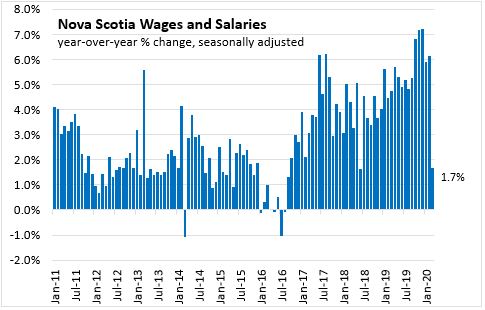
The wages and salaries portion of Nova Scotia employee compensation declined 3.6 per cent from February 2020 to $1.778 billion in March 2020. Compared to the same month in 2019, wages and salaries were up 1.7 per cent. Employer’s social contributions declined 3.1 per cent from the previous month and was 2.1 per cent higher than March 2019.
During the first two months of 2020 (Jan-Feb 2020), Canada’s employee compensation increased 5.0 per cent from the same period in 2019 led by growth in Quebec (+7.2 %). Employee compensation in Nova Scotia during the first two months of 2020 was up 6.1 per cent compared to Jan-Feb 2019. All provinces posted positive year over year growth in employee compensation both in January and February 2020. Wages and salaries in Canada increased 5.1 per cent.
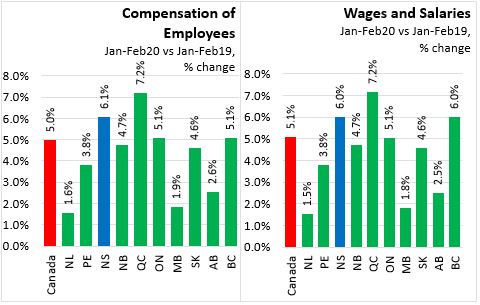
Measures to contain COVID-19 were implemented in all provinces in March 2020 and all provinces reported declines in employee compensation. Compared with February, employee compensation was down 4.5 per cent nationally, with the largest decline in Quebec and the smallest impacts in Newfoundland and Labrador and Prince Edward Island.
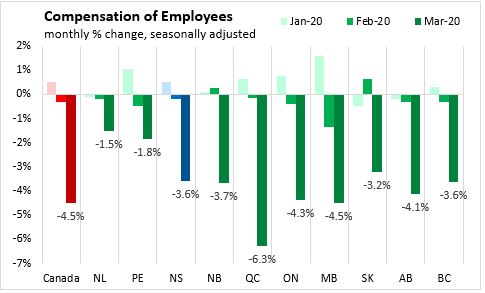
Compared with March 2019, employee compensation in Canada was down 0.6 per cent. Across the country, only 3 provinces posted year over year growth in employee compensation in March 2020, led by Nova Scotia (+1.7 per cent). The largest decline was observed in Manitoba (-4.3 per cent)
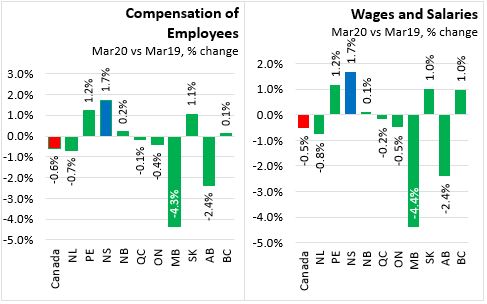
Comparing the seasonally unadjusted data for January-February 2020 with the same period in 2019, total wages and salaries increased 6.1 per cent in Nova Scotia. The strongest growth was in utilities (+21.7 per cent) followed by information and cultural industries (17.7 per cent) and mining, oil and gas extraction (+16.5 per cent).
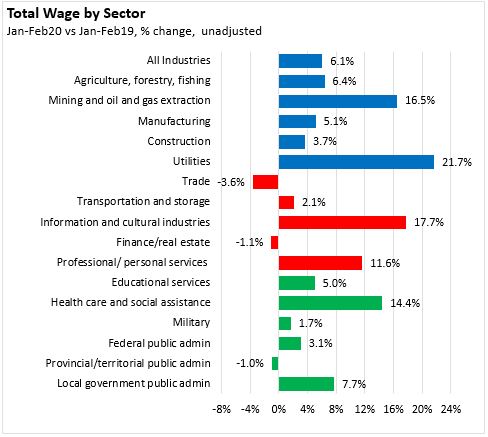
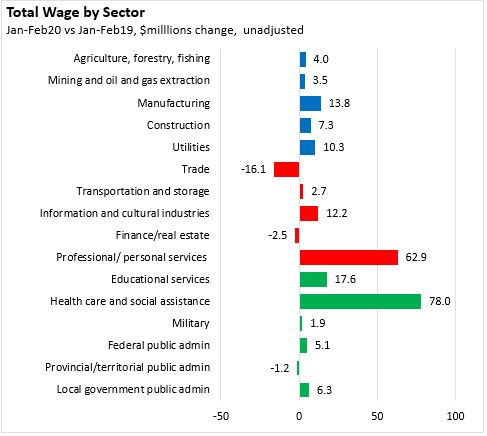
Compared to March 2019, total wages and salaries in Nova Scotia increased 1.8 per cent in March 2020. This was mainly due to the declines seen in trade (-14.2 per cent), construction (-7.9 per cent) and agriculture, forestry and fishing (-11.0 per cent). Year over year, total wages and salaries were up most in information and cultural industries (+21.9 per cent), utilities (+20.4 per cent), and health care (+12.3 per cent).

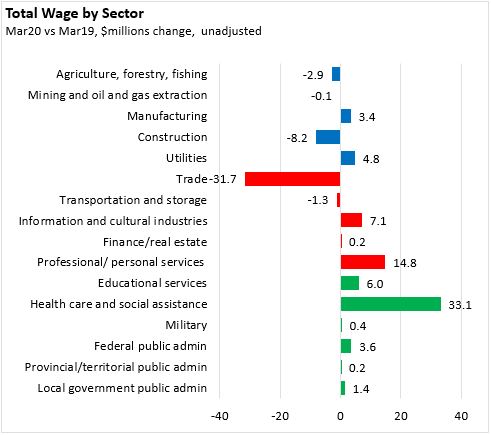
Note: comparison of wages and salaries by sector rely on data that are neither seasonally adjusted nor adjusted to reflect differences in pay periods from one year to the next.
Statistics Canada. Table 36-10-0205-01 Wages, salaries and employers' social contributions (x 1,000)
<--- Return to Archive